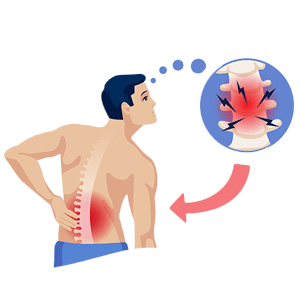
It is important to delve into an analysis of the spinal cord before we discuss the amazing functions it performs in our body.
The Spinal Cord is an often-forgotten or underestimated part of the human body in comparison to the other major organs like the heart, kidney, liver or brain.
The spinal cord is a bundle of 31 important nerves that are collectively encased within the vertebral canal that comprises 33 bones. This fascinating piece of artistry is connected to the brain at the base of your neck and runs all the way to your lower back. It is responsible for the sensory, motor and automatic signals between the brain and the rest of the body.

There are three important components that constitute the entire spinal cord:
There are 31 pairs of spinal nerves that are distributed in a systematic way.

The spinal cord and the brain together constitute the Central Nervous System. It is an incredibly complex and intricate mesh of nerves. Functioning as the body’s main relay station, the CNS is responsible for all the basic functions of the body, such as breathing, walking, talking, movement, and reflexes.
It would be almost impossible to survive without the CNS-that is how vital it is to the body. That explains why a damaged CNS cripples all the basic body functions even if the person is alive.
The spinal cord controls all the reflex actions that are done involuntarily and rapidly. The spinal cord controls all voluntary reflexes as well.
Also Read: Coping With Life After A Spinal Cord Injury
The spinal cord is essentially the information processing center of your body. The electrical currents traversing up and down the spinal cord allow the body to connect and communicate with the brain.
The spinal cord carries messages to the brain that allow you to recognize and process information like:
The other processing functions of the spinal cord include
In a city like Chennai, where there are many hospitals and doctors to deal with spinal cord injuries, HAMSA stands a cut above the rest as first-ever spinal cord rehabilitation center in Chennai. Services in HAMSA are on par with international standards and extend to include brain injury and stroke patients. Supervised by a deeply committed team of experts, HAMSA offers holistic, medical-based practices and comprehensive patient care to provide and promote a quick and complete recovery from spinal cord injuries.
Trust us to give you first-class rehabilitation and nurse your loved ones back to good health. Contact us for further details or visit our website.